
Fundamentals
Online self-expression, at its core, represents the conscious and unconscious sharing of one’s identity, inclinations, and experiences within digital spaces. It encompasses more than simply displaying a profile picture or writing a status update; it involves the intricate ways we communicate our beliefs, our inner thoughts, and our evolving sense of self to an audience that extends beyond immediate physical presence. This activity shapes our personal narratives in the contemporary world, allowing for a unique form of self-disclosure. Understanding this concept begins with recognizing its fundamental role in presenting facets of self.
For communities whose heritage is deeply interwoven with hair, particularly those with textured coils, kinks, and curls, online self-expression takes on an amplified significance. It offers a fresh canvas for dialogues that were once confined to communal gathering places, such as barbershops or braiding circles. These digital platforms serve as contemporary extensions of ancient practices, allowing for the transmission of traditional wisdom, the affirmation of diverse aesthetic preferences, and the forging of new pathways for hair wellness. It is about revealing the inner self, the collective self, and the ancestral self through virtual manifestations.
Online self-expression is a digital echo of age-old communal practices, extending the sacred act of hair sharing and identity affirmation into virtual realms.

Roots in Self-Presentation
The understanding of online self-expression gains clarity when one considers its ties to the established concept of self-presentation. This involves the deliberate or unintended actions an individual undertakes to create a desired perception in the minds of others. Psychologists have long explored how individuals manage impressions in interpersonal interactions.
On digital platforms, this self-presentation becomes a deliberate process, as individuals curate and refine their online personas. This ability to review and revise content before it becomes public allows for a higher degree of control over the message conveyed, diverging from spontaneous, unscripted offline interactions.
In the context of textured hair, this control holds particular resonance. Historically, dominant beauty standards often marginalized natural Black hair, labeling it as unruly or unprofessional. Online spaces provide a sanctuary where individuals can define their hair’s meaning on their own terms, unburdened by external judgments that traditionally constrained physical appearance. The digital sphere, therefore, becomes a space where personal narratives of hair can flourish, reflecting resilience and self-acceptance.
- Self-Image Definition ❉ Individuals craft digital representations reflecting their desired self-image, extending to hair identity.
- Social Validation Seeking ❉ A longing for acceptance from one’s social environment often motivates online presentations.
- Community Building ❉ Shared experiences of hair discrimination or care foster connections and collective identity online.

The Digital Salon ❉ A Space for Kinship
The early days of online interaction, even prior to the advent of widespread social media, saw the burgeoning of communities centered on textured hair. These online forums and discussion boards served as a virtual hearth, replicating the intimacy and educational exchange historically found in physical gatherings. In the late 1990s, for instance, platforms like BlackHairCare.com offered a space where women from around the world could congregate.
They shared styling tips, offered product recommendations, and discussed their fears and triumphs regarding embracing their natural hair. This phenomenon represented a significant shift, creating networks of support when mainstream media offered limited representation or guidance for textured hair care.
This communal sharing echoes ancestral practices where hair care was a collective endeavor, often involving elders passing down knowledge to younger generations. The digital realm simply provided a new avenue for this timeless exchange, allowing for the rapid dissemination of information and the formation of bonds that transcended geographical boundaries. These online gatherings, while digital, sustained the spirit of sisterhood and shared heritage that has long defined textured hair traditions.
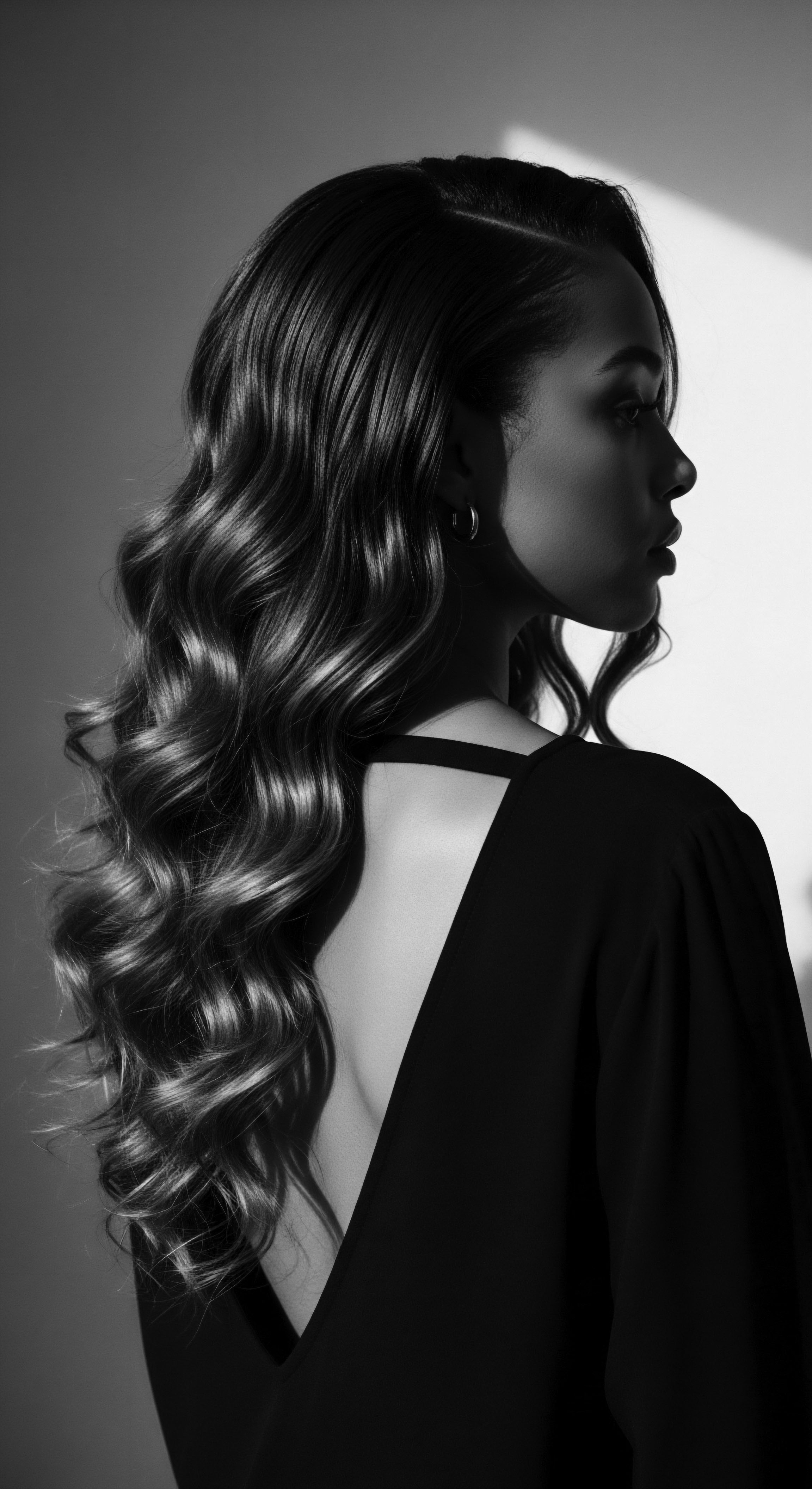
Intermediate
Moving beyond its basic delineation, online self-expression manifests as a dynamic process of identity construction, deeply influenced by the interactive and curated nature of digital environments. Individuals do not merely present an existing self; they actively shape, refine, and sometimes even experiment with different facets of their identity. This active construction is a response to both personal desires for self-actualization and the social mechanisms of online platforms, such as feedback loops, algorithmic suggestions, and community norms. It is a continuous negotiation between an individual’s authentic inclinations and the digital persona they wish to project.
For those connected to textured hair heritage, this process of identity construction holds particular weight. Hair, as a profound symbol of identity and cultural legacy within the African diaspora, becomes a primary vehicle for this online expression. The digital realm empowers individuals to reclaim narratives around their hair, challenging historical misrepresentations and fostering a more inclusive understanding of beauty. Online spaces allow for the continuous re-definition of self through hair, reflecting both individual stylistic choices and collective cultural affirmations.
Online self-expression for textured hair communities reimagines ancient communal knowledge-sharing, fostering identity reclamation and challenging historical beauty norms.

The Natural Hair Movement and Digital Counter-Culture
The re-emergence of the Natural Hair Movement in the early 2000s stands as a powerful example of online self-expression’s impact on textured hair heritage. This resurgence, distinct from the political statements of the 1960s Civil Rights era, found fertile ground in burgeoning online communities. Prior to this digital wave, many Black women lacked comprehensive knowledge about how to properly care for their natural hair texture, often resorting to chemical straighteners due to societal pressures and limited resources. The digital sphere provided a much-needed sanctuary.
YouTube, in particular, became a significant platform where Black beauty bloggers emerged as catalysts, sharing haircare tutorials, product reviews, and personal journeys. This shift allowed for a collective learning experience, democratizing knowledge that was previously inaccessible or marginalized. An ethnographic study analyzing over 5000 comments on YouTube natural hair videos revealed a strong sense of community, shared purpose, and social support among participants. This digital sisterhood cultivated a counter-culture, affirming natural hair beauty and contributing to positive self-esteem and racial pride among women in the African diaspora.

From Forums to Feeds ❉ Evolution of Digital Spaces
The progression of online self-expression in hair communities has mirrored the evolution of digital platforms. Early forums, like Nappturality, provided text-based discussion spaces, allowing for detailed exchanges of information and personal anecdotes. As technology advanced, the shift to multimedia-rich platforms like YouTube, Instagram, and TikTok transformed how hair knowledge was shared.
Videos and images allowed for visual demonstrations of styling techniques, product applications, and the celebration of diverse hair textures in motion. This visual component significantly enhanced the learning experience and the expressive capacity of individuals.
| Era Late 1990s – Early 2000s |
| Platform Type Online Forums (e.g. BlackHairCare.com, Nappturality) |
| Primary Mode of Expression Textual discussions, shared written experiences |
| Impact on Hair Heritage Fostered early community, shared care rituals, offered discreet rebellion against chemical straightening. |
| Era Mid-2000s – Early 2010s |
| Platform Type Blogs, YouTube |
| Primary Mode of Expression Written posts, video tutorials, visual demonstrations |
| Impact on Hair Heritage Democratized visual knowledge, showcased diverse hair journeys, inspired widespread natural hair transitions. |
| Era Mid-2010s – Present |
| Platform Type Instagram, TikTok, Facebook, Pinterest |
| Primary Mode of Expression Short videos, visual aesthetics, live streams, interactive communities |
| Impact on Hair Heritage Amplified visual representation, promoted specific styles and products, influenced global beauty standards, sustained ongoing discourse. |
| Era These digital shifts continuously reshaped how ancestral hair wisdom found contemporary voice and how textured hair identity gained broader recognition. |
The shift towards image and video-centric platforms meant that the visual rhetoric of Black hair could be powerfully reshaped. Instead of passively consuming mainstream media that often misrepresented or omitted their hair, individuals actively created and disseminated their own images. This visual agency directly countered prevailing beauty ideals that marginalized natural hair, allowing for self-definition and positive affirmation of Blackness.
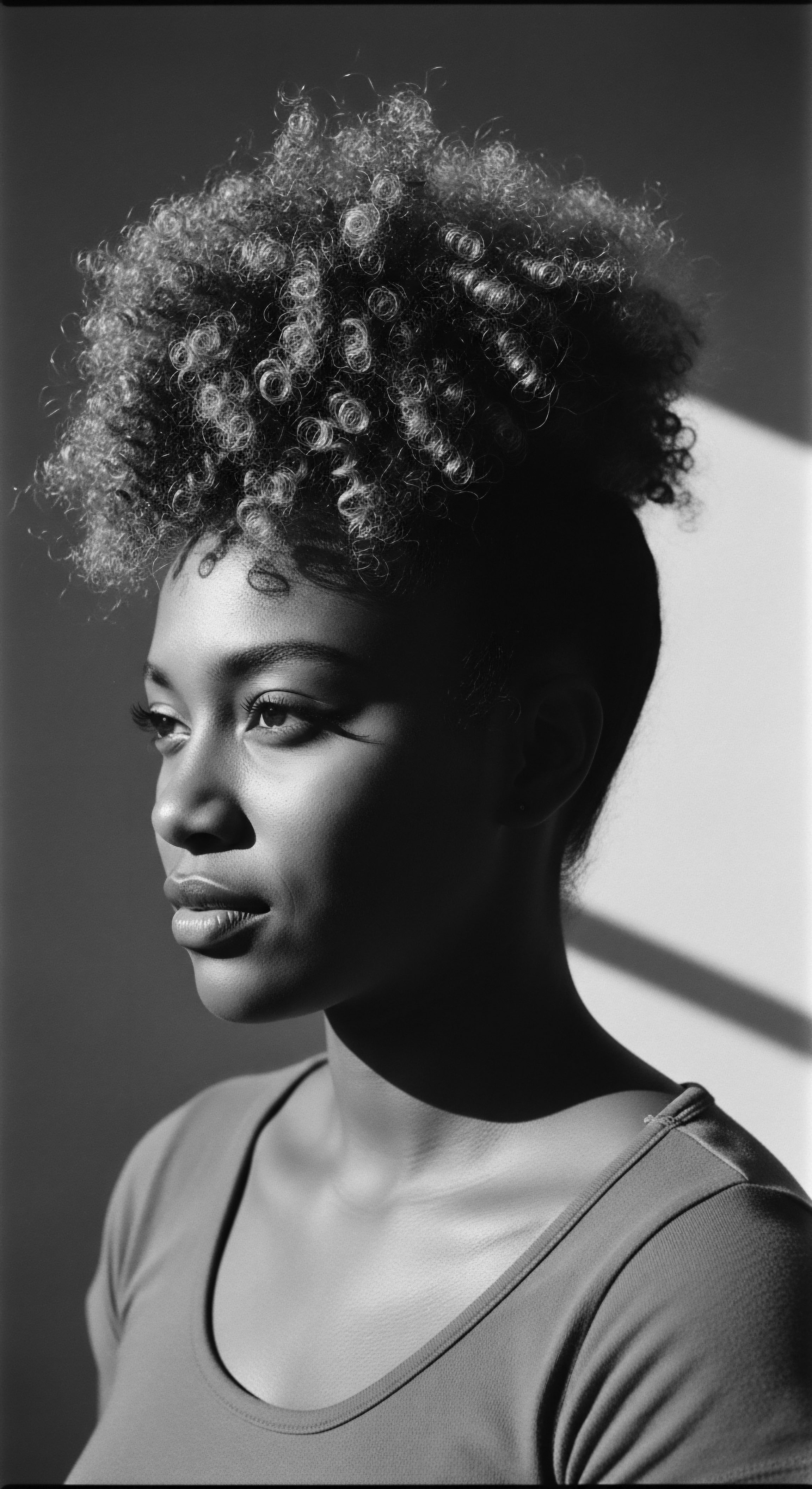
The Psychological Undercurrents
The digital landscape, while offering liberation, also introduces complexities related to psychological well-being. Individuals curate idealized versions of themselves online, often driven by a desire for social validation and positive self-regard. This pursuit of external approval can impact self-esteem, particularly when comparing oneself to others’ meticulously crafted online presentations. However, for Black women, studies reveal a powerful positive dimension ❉ social media can serve as a potent tool for self-acceptance and empowerment.
A study by Nkuna (2024) explored how social media representations of Black women’s hair shape their sense of identity and self-concept. The findings underscore the dual role of social media ❉ it has historically perpetuated stereotypes tracing back to slavery, yet it also provides a robust mechanism to reverse this systemic oppression. Positive portrayals of Black hair online cultivate attitudes of self-acceptance and empowerment.
Social media facilitates connection, discussion, and sharing of haircare tips, solidifying a sense of belonging within the community. This demonstrates a profound psychological shift, where online engagement moves beyond mere self-presentation towards collective healing and identity fortification.
The consistent display of diverse natural hair textures online contributes to a broader acceptance, reducing the feelings of marginalization many experienced offline. It transforms hair from a source of shame or discomfort into a source of pride and connection, resonating deeply with the ancestral understanding of hair as a marker of identity and spiritual significance.
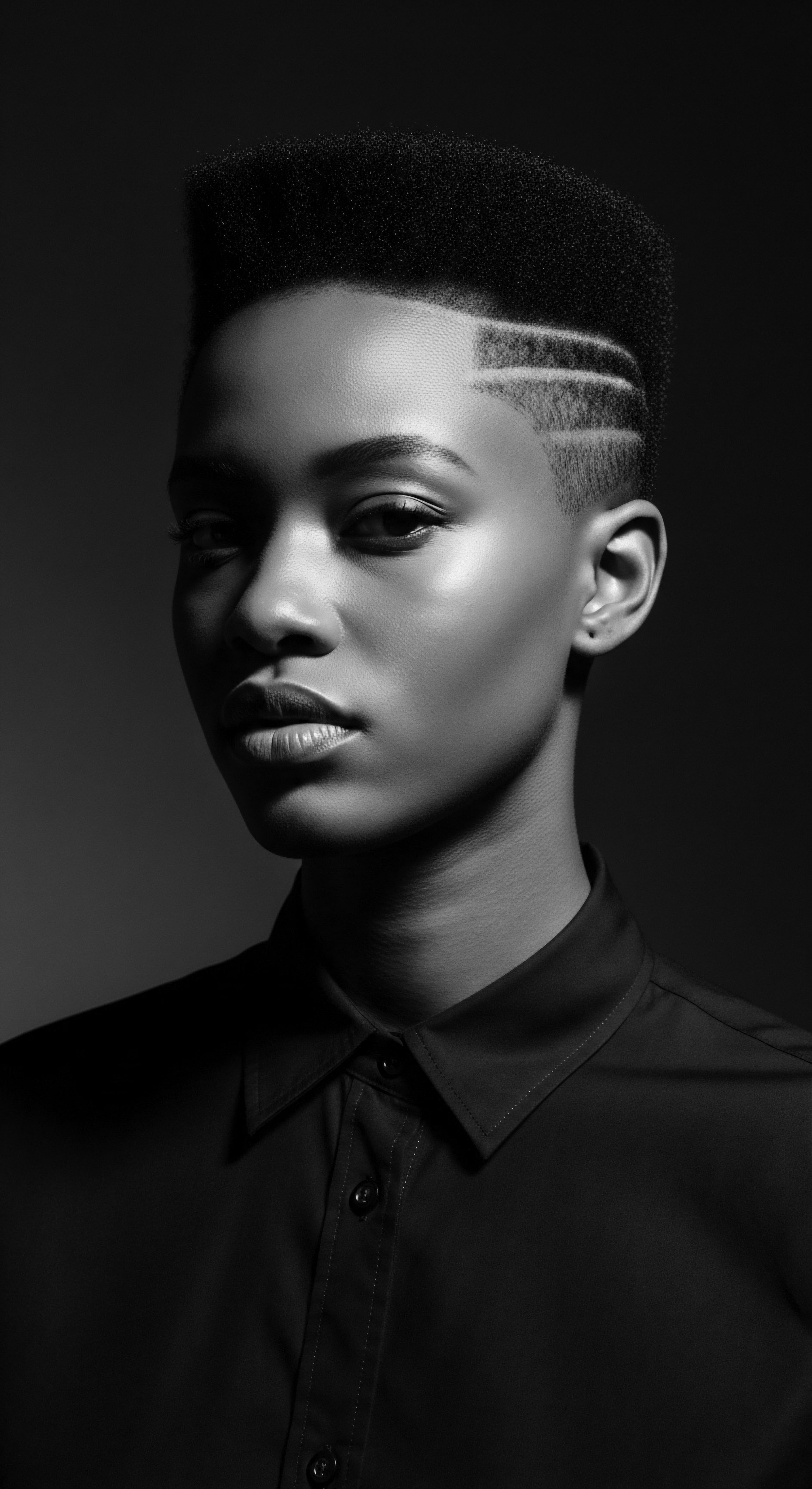
Academic
From an academic vantage, online self-expression constitutes the intricate, mediated presentation of an individual’s internal identity and lived experiences within digital environments. This complex process extends beyond a simple projection of an offline persona; it represents an active, iterative construction influenced by algorithmic affordances, the subtle interplay of social validation mechanisms, and the socio-cultural norms governing various online communities. It is a continuous, often reflexive, act of identity formation, where the digital presence acts as a dynamic extension of the self. The underlying significance of online self-expression lies in its capacity to facilitate both individual self-realization and collective identity movements, particularly for historically marginalized groups who have historically navigated restrictive public spheres.
This delineation emphasizes that online self-expression is not a static declaration, but rather a fluid performance. It is characterized by its intentionality, the selective disclosure of information, and the strategic presentation of desired characteristics. Scholars in cyberpsychology and digital anthropology observe how individuals leverage the absence of immediate physical cues in online spaces to curate self-images, sometimes aligning with an ideal self, and other times reconstructing aspects of identity entirely. This dynamic process offers profound implications for understanding identity, relationships, and well-being in an increasingly digitized world.

Genealogies of Hair and Digital Reclamation
The history of Black hair within the African diaspora is a testament to its profound symbolic and social meaning. Ancestrally, hairstyles communicated societal standing, marital status, age, and spiritual beliefs. The forced shaving of heads during the transatlantic slave trade aimed to strip enslaved Africans of their identity, culture, and communal ties.
Hair thus became a contested site, evolving from a marker of cultural pride to a symbol of resistance and survival in new lands. This enduring legacy underpins much of the textured hair experience, where historical attempts at erasure were met with resilience and adaptation.
The advent of digital platforms provided a powerful new arena for this ongoing reclamation. Online self-expression, particularly through the natural hair movement, became a site of profound cultural and political resistance. Dr. Johanna Lukate, a social and cultural psychologist, notes that for women of color, hairstyling in any form, be it relaxing, wearing wigs, or sporting an Afro, functions as a means of managing a marginalized identity.
It is a styling choice made with the understanding that judgment extends beyond one’s control to include inherited physical attributes such as hair texture. The online sphere, then, serves as a counter-hegemonic space where these judgments are not merely confronted, but actively dismantled.
Digital platforms serve as powerful forums for the collective re-imagining of textured hair, transforming historical marginalization into a vibrant declaration of identity.
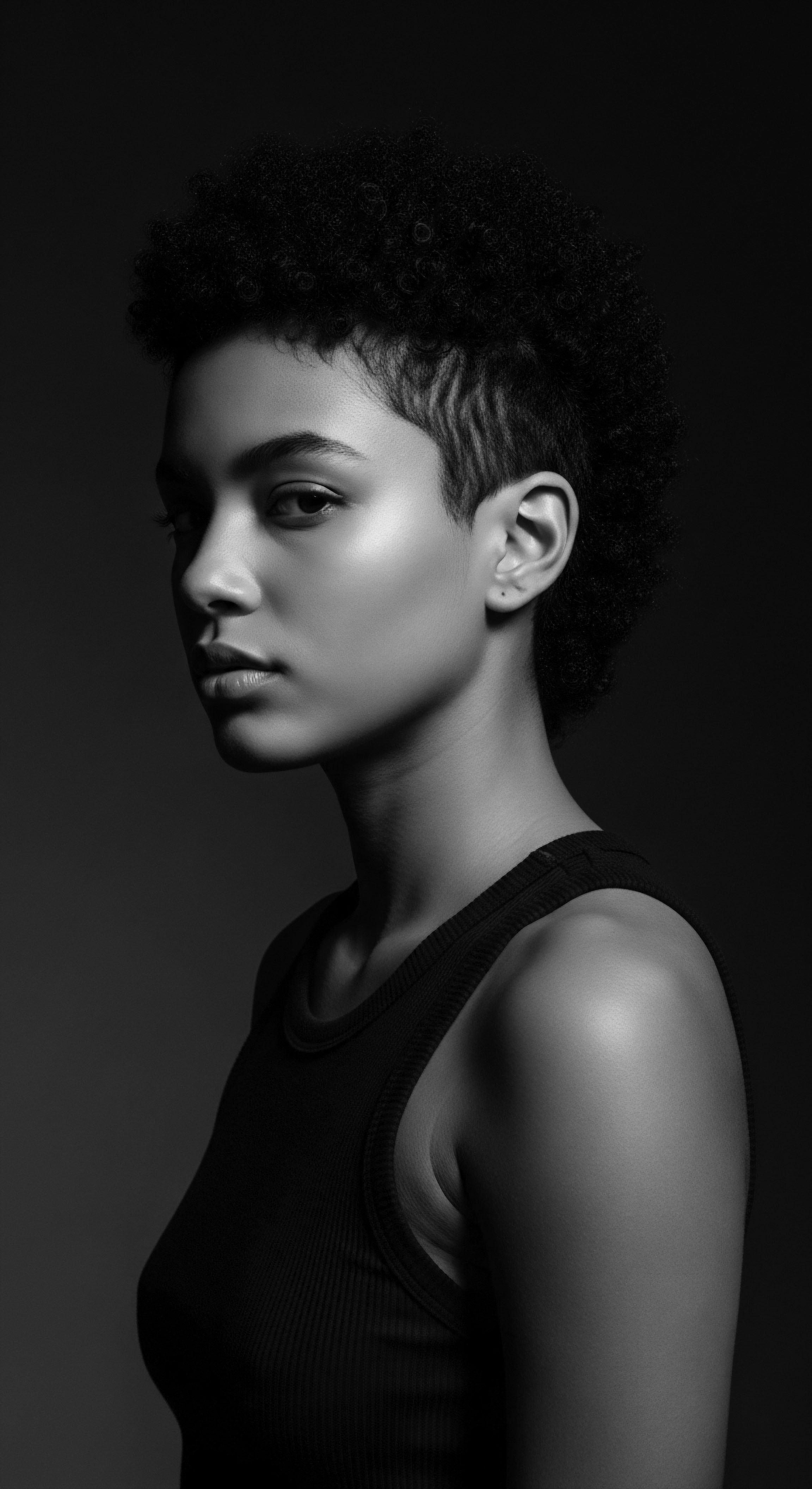
A Case Study ❉ YouTube’s Role in Natural Hair Affirmation
One particularly compelling historical example of online self-expression’s power within textured hair heritage can be found in the early days of YouTube. As the platform matured, Black women organically created content focused on natural hair care, filling a significant void in mainstream media representation. Patrice Yursik, founder of the award-winning blog Afrobella in 2006, recognized the scarcity of information and inspiration celebrating Black hair and beauty in traditional magazine formats. Her work, along with countless others who began sharing their hair journeys on YouTube, initiated a crucial dialogue.
A qualitative analysis of YouTube’s natural hair community (YNHC) by Haaruun and Watson (2018) involved examining 140 YouTube videos and over 5000 viewer comments. Their findings indicate that the YNHC functioned as a beauty counterculture and a virtual support system, offering a free space for Black women to instruct, inform, and foster international dialogues about their hair. The study revealed that a significant majority of survey respondents—92%—expressed satisfaction with their natural hair’s appearance, and 95% felt good about wearing their hair naturally.
This statistic is particularly illuminating as it underscores the direct positive impact of online self-expression within these communities on individual self-perception and racial pride. The online space allowed for the communal affirmation of beauty standards that challenged Eurocentric ideals, leading to tangible shifts in self-esteem and identity for thousands.
- Affirmation of Identity ❉ Online platforms enable the collective affirmation of Black beauty standards, countering historical marginalization.
- Knowledge Dissemination ❉ Digital spaces provide accessible channels for sharing ancestral hair care techniques and contemporary adaptations.
- Community Resilience ❉ Virtual networks offer social support and a sense of belonging, mirroring traditional communal gathering places.
- Challenging Stereotypes ❉ Positive representations actively work to reverse long-standing societal biases against textured hair.
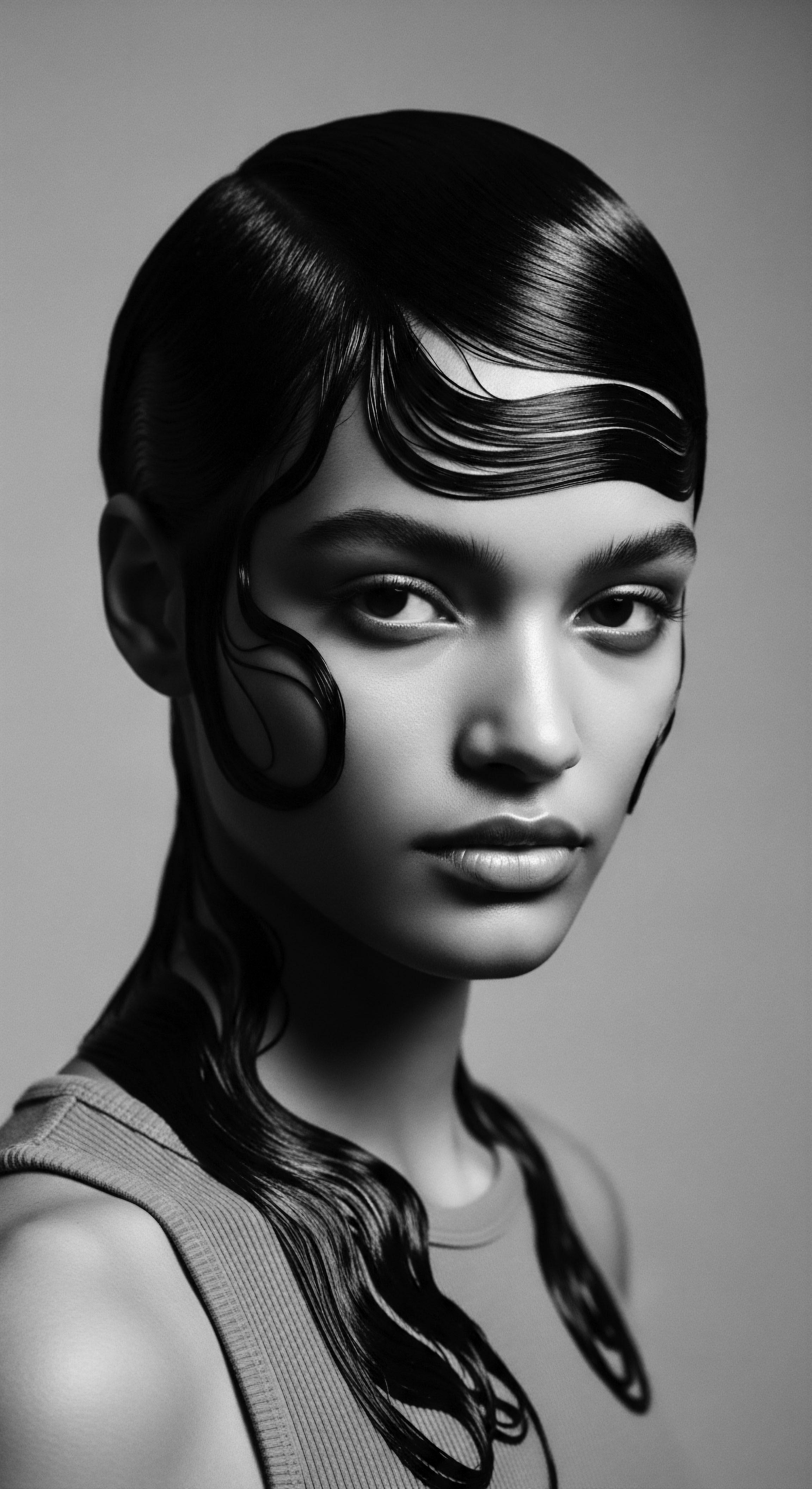
The Intricacies of Digital Identity Construction
From an academic perspective, the process of online identity construction, particularly for textured hair communities, is far from simplistic. It involves a continuous interplay between one’s authentic self, an idealized self, and sometimes, a curated public persona. Research suggests that while individuals might present an idealized version of themselves online, authentic self-expression correlates with greater life satisfaction. The digital realm, therefore, offers a unique laboratory for identity experimentation and negotiation.
Furthermore, online self-expression within these contexts often extends into digital activism and resistance. The act of openly displaying natural hair online, sharing its care practices, and discussing its cultural significance becomes a political statement, challenging discriminatory norms that persist in various societal spheres. This is evident in movements such as #BlackGirlMagic, which emerged as a direct response to negative portrayals and served to celebrate Black women’s achievements and affirm their beauty.
However, challenges also exist. The proliferation of images, while generally positive, can lead to overrepresentation of certain hair textures, inadvertently leaving some Black women with limited visibility, such as those with locs. This highlights the need for ongoing critical engagement with digital spaces to ensure true inclusivity across the diverse spectrum of textured hair. Academic inquiry continues to dissect the nuanced psychological effects of online self-presentation, recognizing its capacity to both bolster and potentially fragment identity, calling for digital literacy and thoughtful engagement.
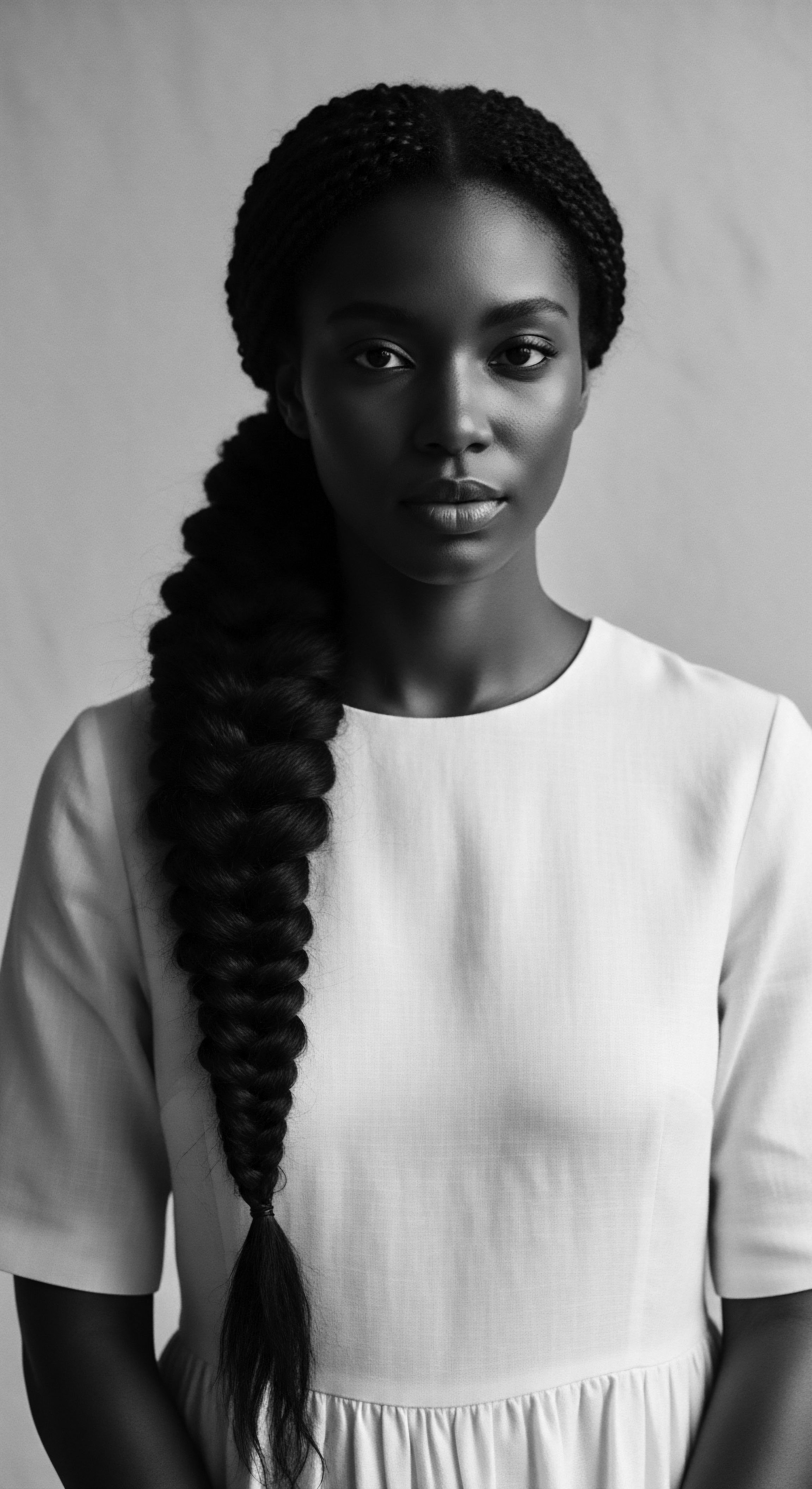
Analyzing the Deep Meaning of Online Self-Expression
The deeper meaning of online self-expression for textured hair communities transcends mere aesthetics; it addresses historical trauma, collective healing, and the assertion of sovereignty over one’s body and image. It is an act of reclaiming ancestral knowledge, affirming self-worth in a world that has historically denied it, and building intergenerational bridges through shared digital experiences. This phenomenon provides a robust framework for understanding contemporary identity politics as they intersect with race, gender, and digital technology.
Scholarly work in digital ethnography, which adapts traditional ethnographic methods to online environments, offers valuable insights into these virtual communities. Researchers analyze textual and visual data from platforms, engaging with participants to understand the unique communal cultures that form around shared interests like natural hair. This methodology allows for a profound understanding of how individuals, through their online expressions, collectively define beauty, negotiate identity, and provide social support that extends far beyond the digital screen. The digital space becomes a living archive, continuously documenting and shaping the narrative of textured hair heritage.
The ongoing dialogues surrounding product efficacy, ingredient awareness, and DIY hair care in online forums, often initiated by users sharing their own experiences, echo the centuries-old tradition of communal knowledge sharing. These conversations reflect a deeper understanding of the biological nuances of textured hair, validated and amplified through scientific principles shared in accessible formats. This confluence of ancestral wisdom, lived experience, and modern scientific insight forms the bedrock of online self-expression in this context.
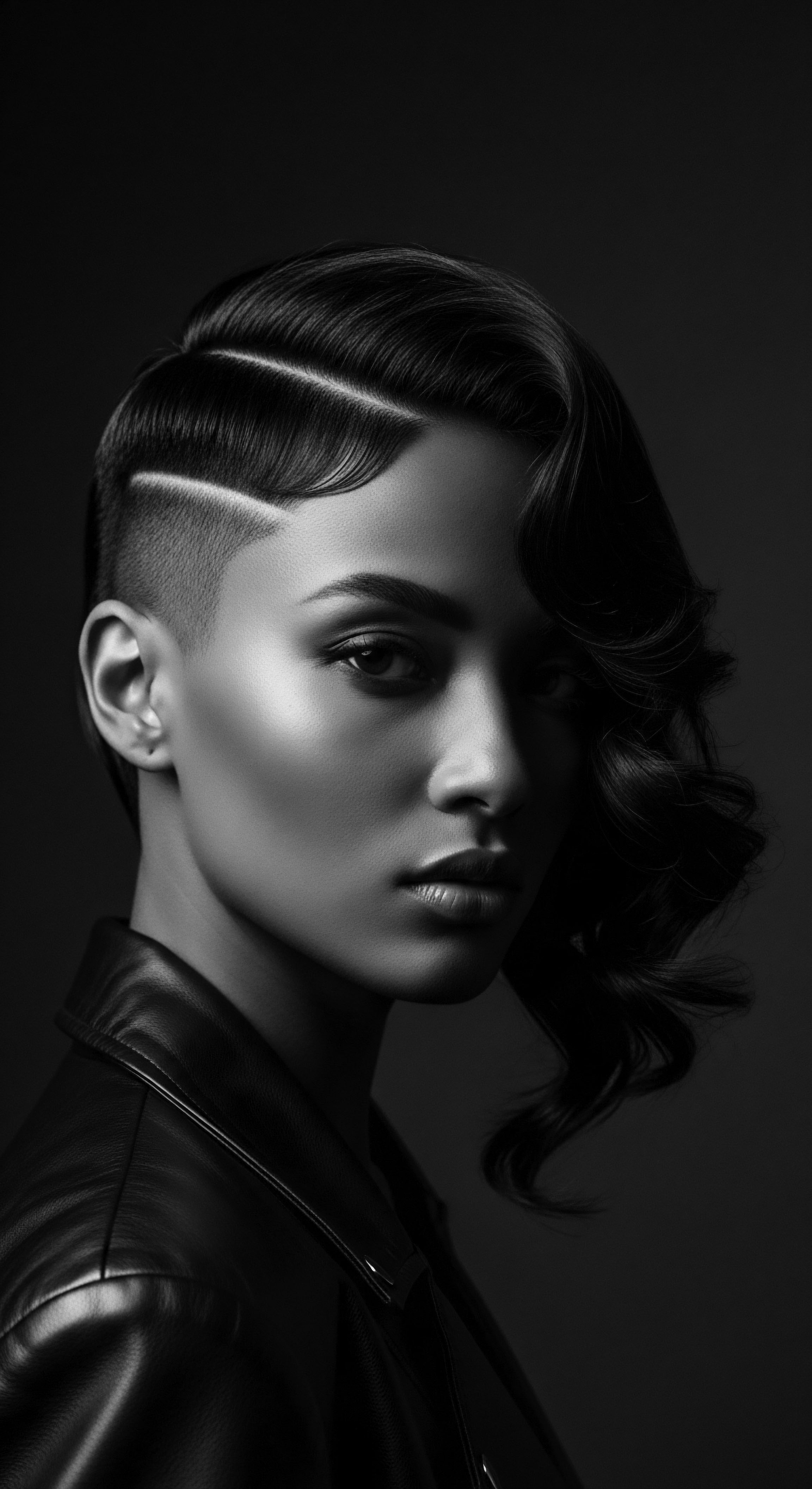
Reflection on the Heritage of Online Self-Expression
The journey through the expansive meaning of online self-expression, particularly as it relates to textured hair heritage, truly reveals a profound continuum. From the elemental biology of the coil to the intricate patterns of ancestral adornment, hair has always held a sacred space in Black and mixed-race traditions. Digital platforms, in their sprawling connectivity, now serve as contemporary extensions of this ancient lineage, breathing new life into timeless practices of care and community. We witness the echoes of our foremothers’ braiding circles in virtual meetups, the whispers of herbal remedies in shared online recipes, and the resilience of a people in every proudly displayed crown of coils.
Online self-expression, through this lens, is a living, breathing archive of identity and belonging. It stands as a testament to the enduring spirit of individuals who, despite historical attempts to diminish their hair’s inherent beauty and cultural significance, continue to find ways to affirm, celebrate, and transmit this precious heritage. The digital space allows for an unbound helix of self-definition, where every shared image, every tutorial, every heartfelt comment contributes to a collective tapestry of empowerment. It is a powerful affirmation that the story of textured hair, deeply rooted in its biological and cultural past, continues to unfurl with vibrant energy in the present, shaping a future where every strand is acknowledged, honored, and celebrated for its unique ancestral narrative.
This continuous interaction between the personal and the collective, the historical and the contemporary, solidifies online self-expression as a profound act of self-love and communal wisdom. It is a quiet revolution, often unfolding in the intimate glow of a screen, yet its impact resonates globally, weaving new threads into the ancient and beautiful story of Black and mixed-race hair.
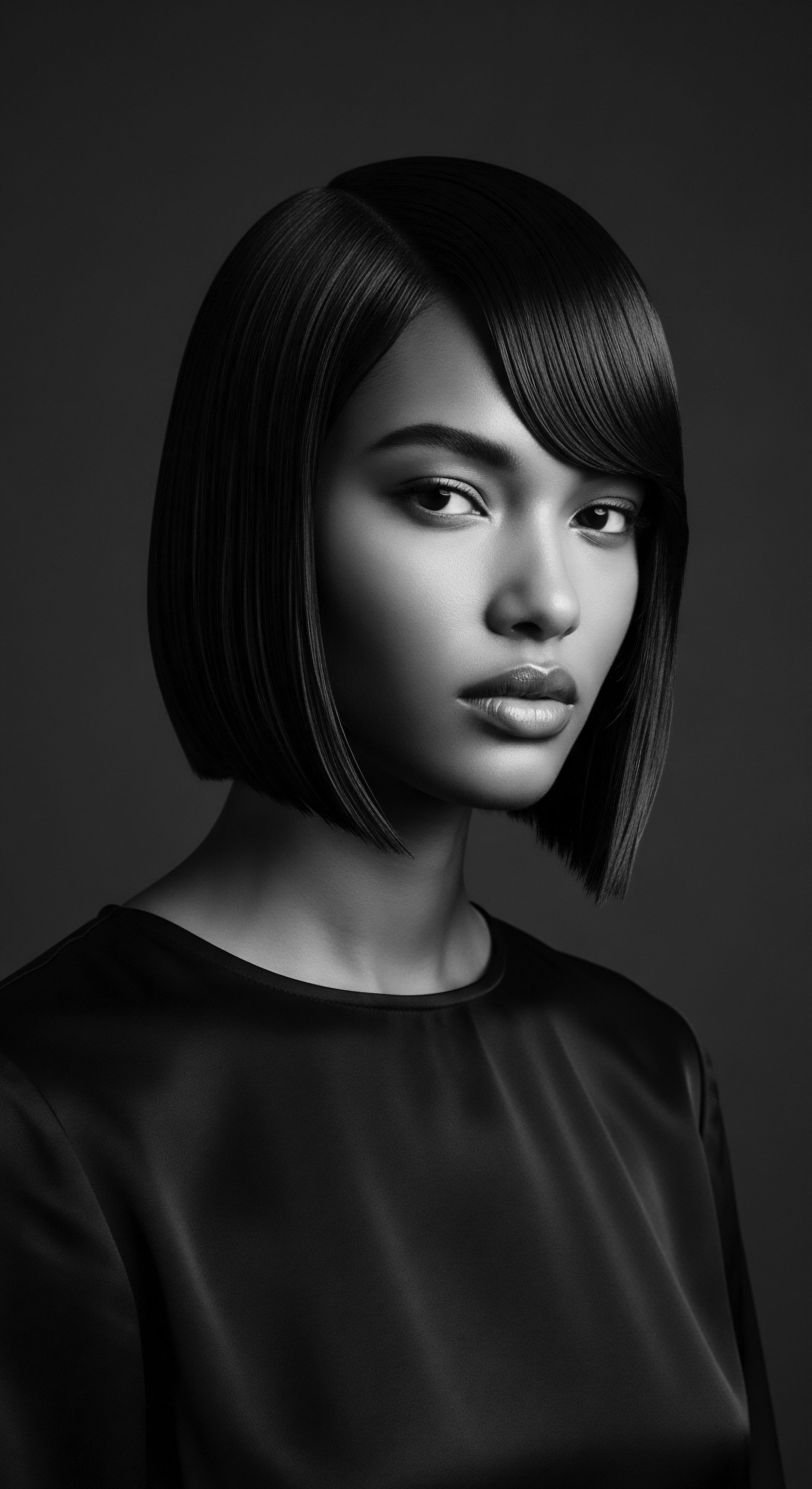
References
- Byrd, A. D. & Tharps, L. (2014). Hair Story ❉ Untangling the Roots of Black Hair in America. St. Martin’s Griffin.
- Haaruun, A. & Watson, M. (2018). Digital Beauty ❉ Screening Black Hair in Cyberspace. In Digital Beauty ❉ Screening Black Hair in Cyberspace. Brill.
- Nkuna, M. T. (2024). Contribution of Social Media in Shaping Self-Perceptions ❉ A Case of Black Women. International Journal of Humanities and Social Sciences, 12(1), 17-26.
- Haaruun, A. & Watson, M. (2018). Digital Beauty ❉ Screening Black Hair in Cyberspace. In Digital Beauty ❉ Screening Black Hair in Cyberspace. Brill.
- Byrd, A. D. & Tharps, L. (2014). Hair Story ❉ Untangling the Roots of Black Hair in America. St. Martin’s Griffin.
- Lukate, J. (2017). The Psychology of Black Hair. TEDxTalk.
- Manago, A. M. Graham, M. B. Greenfield, P. M. & Salimkhan, G. (2008). Self-presentation and gender on MySpace. Journal of Applied Developmental Psychology, 29(6), 446-458.
- Michikyan, M. Subrahmanyam, K. & Dennis, J. (2014). Facebook use and its relationship to adolescents’ self-esteem, self-concept, and well-being. Computers in Human Behavior, 30, 244-252.
- Olayinka, A. et al. (2021). #BlackGirlMagic ❉ Impact of the social media movement on Black women’s self esteem. Journal of the National Medical Association, 113(1), 126-129.
- Suler, J. R. (2004). The online disinhibition effect. CyberPsychology & Behavior, 7(3), 321-326.
- Toma, C. L. Hancock, J. T. & Ellison, N. B. (2008). Separating fact from fiction ❉ An examination of deceptive self-presentation in online dating profiles. Personality and Social Psychology Bulletin, 34(8), 1023-1036.
